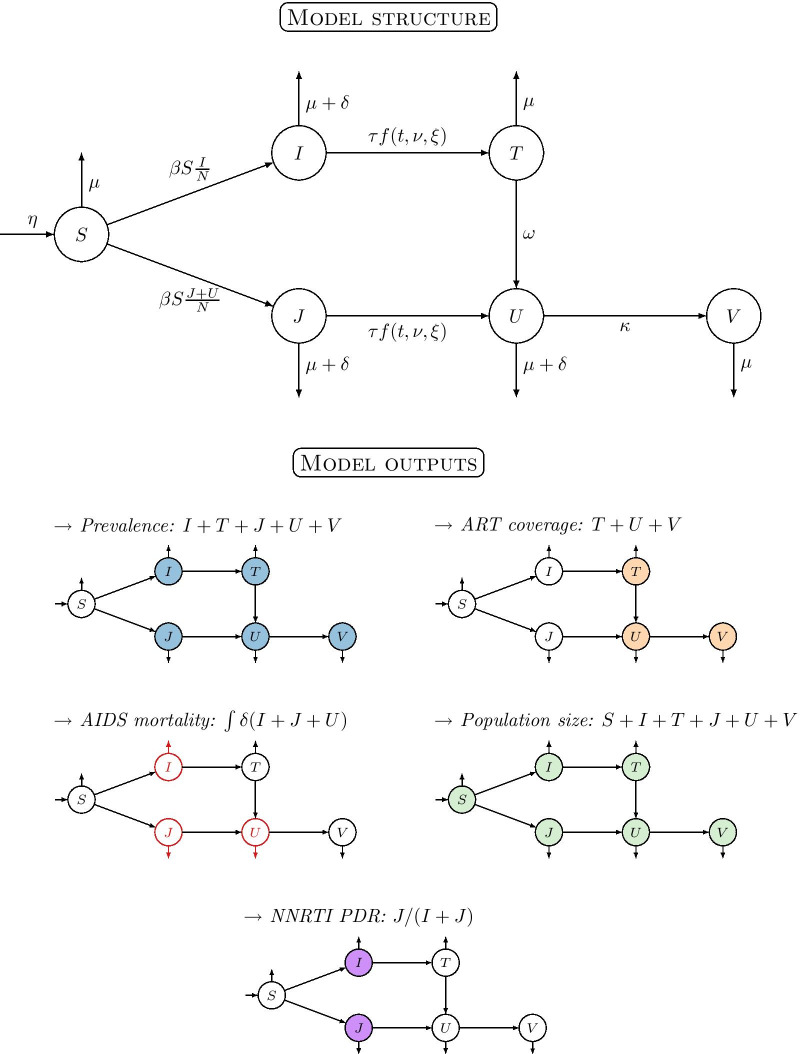Fig. 1.
Structure of the dynamic model of HIV-1 transmission, ART rollout and resistance emergence (upper panel), and model outputs with colours corresponding to Figs. 2 and 3 (lower panel). The population is split into six compartments: susceptible to HIV-1 (); infected with a drug-sensitive strain and either untreated () or treated with first-line ART (); infected with a drug-resistant strain and either untreated (), treated with first-line ART () or treated with second-line ART (). The model has ten parameters: transmission rate ; maximal treatment rate scaled by a sigmoid function (controlled by two parameters for shift and slope ); rate at which de novo NNRTI resistance emerges during treatment (); rate of switching to second-line ART (); rate of AIDS-related mortality (); rate of background mortality (); rate of population growth (); and the initial proportion of NNRTI resistance (not shown)

